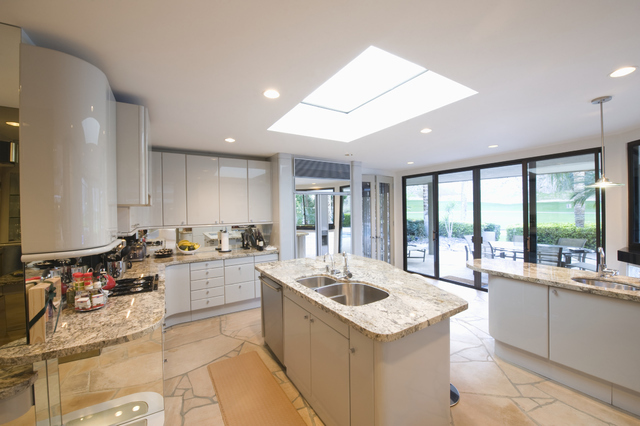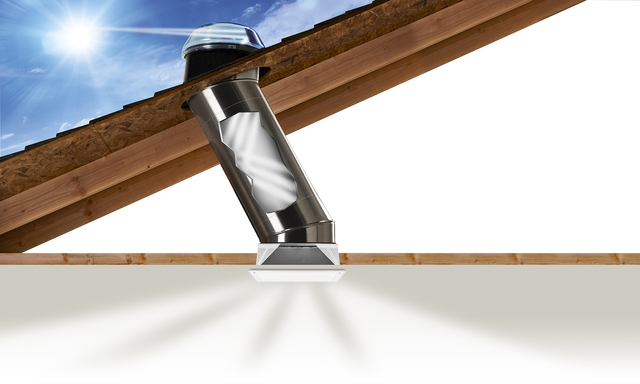Skylights reduce energy use and promote well-being
One of the benefits of living in Southern Nevada is not having to worry about seasonal affective disorder, a type of depression related to changes in seasons. Symptoms are most common in areas that experience fewer sunny days, usually starting in the fall and continuing into winter. Treatment for the “winter blues” may include phototherapy, psychotherapy and medications.
But no phototherapy (light therapy) is needed in Southern Nevada, known for its abundance of sunshine — more than 300 days each year. However, there are homes here that have areas that are too dark, even during the light of day.
If one of those homes is yours, say hello to Glenn Georgens who owns and operates Sun Cat Skylights. He has been installing skylights for the past 40 years.
“Skylights are an environmentally friendly way to bring pure, natural light into the home,” he said. “There are different kinds of skylights such as square or rectangular and it’s basically an opening on the roof with plastic or glass covering.
“They perform especially well in green buildings by utilizing natural light for interior illumination. That not only reduces energy usage but provides natural, full-spectrum light that enhances one’s well-being and comfort.”
According to Georgens, the most popular room for a skylight is the bathroom followed by hallways, kitchens, laundry rooms and even closets. The least popular are bedrooms where people prefer dark in order get a sound sleep.
“I have found over the years that people don’t like a dark home,” he said. “Maybe it’s psychological. I don’t know. But I do know that a skylight adds beauty because natural light makes a room looks so much better.”
For the past 20 years, Georgeans has been installing Solatube Daylighting Systems, first introduced in Australia some 25 years ago. This high-performance daylight system uses advanced optics to improve the way daylight is harnessed.
Instead of just an opening in the roof, each Solatube uses a clear dome on the roof to gather light. A highly reflective “light tube” transmits the light through the attic to a ceiling-mounted lens evenly diffusing the light inside the room.
That means more light with a smaller opening because the light is so reflective. There are several options for lenses and because the system is self-enclosed, there is little heat gain or loss, summer to winter.
“Solatubes, or tubular skylights, are easy and affordable to install in almost any room,” he said. “People are surprised at the dramatic difference they make in dark rooms or gloomy hallways. Customers tell me that the skylights provide just the right amount of natural illumination throughout the day so the entire space feels evenly lit from sunrise to sunset.
“I’m also told that the convenience allows peace of mind because you switch off interior lights during the day, save money on electric bills and reduce one’s personal carbon footprint.”
When installing a skylight, always check for any shading that might obstruct the light such as a chimney, nearby trees, or by another part of the house or another building. Choose a room and an exact location before installation.
Measuring the size for the future skylight is important as the size of the window depends on the size of the house. The smaller the house the smaller the skylight should be and the right size of the window will prevent insulation problems.
American architect Frank Lloyd Wright was an enthusiastic proponent for skylights. He viewed them as windows in the ceiling that made for a great interior architectural detail that provided natural light to illuminate room decor. He saw it as a way of bringing more of the outdoors inside.
When preparing to install a skylight, plan carefully to achieve the most pleasing and efficient results. It is important to know where the sun starts out and where it ends up before installation.
Skylights in sloping roofs facing south are liable to overheat rooms. North-facing skylights more often admit a soft, diffused light throughout the day although they won’t give that sun-splashed effect. The effects of direct sunlight and its ultraviolet rays can be blocked with gray- or bronze-tinted glass.
An additional form of shading, such as built-in blinds or horizontal curtains, can also help regulate the amount of light. Comfort glazing, a standard feature on many skylight brands, provides insulation against heat buildup in summer and heat loss in winter.
And even though all that light is coming in, don’t expect to look out onto the heavens and see distant stars and galaxies or spaceships. Prisms and other optical features don’t allow that.


















